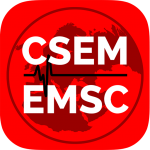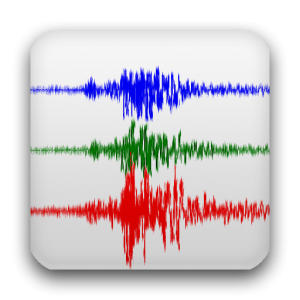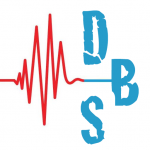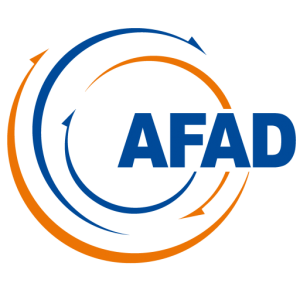EARTHQUAKE GEOLOGY
Course Description
Instructor(s):
M. Ersen AKSOY (Assist. Prof.)
Course Code / Semester: GEOE 4525 / Fall
Level: Undergraduate
Pre-requisites: None
Assessment:
Midterm: %20 (written examination)
Term Project: %20 (presentation or term project)
Final: %60 (written examination)
Course Highligts: This course features lectures in the class room.
Course Description: This course introduces to the main concepts of how earthquakes and active fault systems are studied in science. Students will learn the related terminology, the hazards related to earthquakes, important historical seismic events, and various research methods of this domain. Main topics are, measuring and monitoring earthquakes, earthquake magnitudes, locating earthquakes, active fault systems. See the course calendar for more topics.
Course Calendar
Week |
Topic |
Lecturers |
Assistants |
|
1 |
Introduction to the course | Assist. Prof. M. Ersen AKSOY | |
|
2 |
|||
|
3 |
|||
|
4 |
|||
|
5 |
|||
|
6 |
|||
|
7 |
|||
|
8 |
|||
|
9 |
|||
|
10 |
|||
|
11 |
|||
|
12 |
|||
|
13 |
|||
|
14 |
Tools
Students are expected to bring their course materials on each class.
Course materials:
- Notebook
- Pencil
- Given publications
Suggested Smartphone Apps
 LastQuake – EMSC Earthquakes
LastQuake – EMSC Earthquakes
LastQuake is the Euro-Mediterranean Seismological Centre’s (EMSC) official app and provides you reliable information on earthquakes hits.
Download for Android
Download for Iphone
 Seismograph / Seismometer
Seismograph / Seismometer
These Android and İOS apps are virtual seismometers that record seismic waves in three directions; X, Y and Z.
Download for Android
Download for Iphone
 Deprem Bilgi Sistemi
Deprem Bilgi Sistemi
This the official app of the Kandilli Observatory, Boğaziçi University. It provides reliable information on earthquakes hits in Turkey and surrounding area.
Download for Android
Download for Iphone not available.
 AFAD Deprem
AFAD Deprem
This the official app of the National Disaster & Emergency Management Authority of Turkey. It provides reliable information on earthquakes hits in Turkey and surrounding area covering all seismic stations of all national institutions.
Download for Android
Download for Iphone
Readings
Slemmons, D.B., and DePolo, C.M., 1986, Evaluation of Active Faulting and Associated Hazards, in Geophysics Study Committee, G.R.F., National Research Council, ed., Active Tectonics: Impact on Society: Washington D.C., National Academic Press. (pdf)
Armijo, R., Pondard, N., Meyer, B., Uçarkus, G., Lepinay, B.M.d., Malavieille, J., Dominguez, S., Gustcher, M.-A., Schmidt, S., Beck, C., Çagatay, N., Çakir, Z., Imren, C., Eriş, K., Natalin, B., Özalaybey, S., Tolun, L., Lefevre, I., Seeber, L., Gasperini, L., Rangin, C., Emre, O., and Sarikavak, K., 2005, Submarine fault scarps in the Sea of Marmara pull-apart (North Anatolian Fault): Implications for seismic hazard in Istanbul: Geochemistry Geophysics Geosystems, v. 6, p. Q06009. (pdf)
Uçarkuş, G., Çakır, Z., and Armijo, R., 2011, Western Termination of the Mw 7.4, 1999 İzmit Earthquake Rupture: Implications for the Expected Large Earthquake in the Sea of Marmara: Turkish J. Earth Sci, v. 20, p. 379-394. (pdf)
Aksoy, M.E., Meghraoui, M., Vallee, M., and Cakir, Z., 2010, Rupture characteristics of the A.D. 1912 Murefte (Ganos) earthquake segment of the North Anatolian fault (western Turkey): Geology, v. 38, p. 991-994. (pdf)
Lecture Notes
Under construction!
Terminology:
Earthquake: Earthquakes are generally assumed to be elastic waves radiating out from a rupture in the Earth that slips suddenly and generally in a brittle manner (Slemmons & DePorto, 1986).
Web sources
Earthquake Hazard
GEM Global Earthquake Model
This is a short video about the GEM Global Earthquake Model. GEM is a global collaborative effort providing tools and resources for transparent assessment of earthquake risk anywhere in the world. By pooling data, knowledge and people, GEM acts as an international forum for collaboration and exchange, and leverages the knowledge of leading experts for the benefit of society.
Downloads
Under construction!